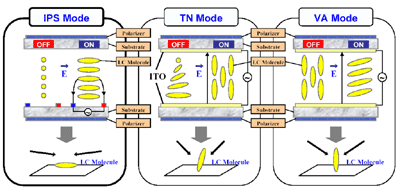Dell UltraSharp 2001FP Preview: Gaming LCDs for the Masses
by Kristopher Kubicki on November 10, 2003 12:36 AM EST- Posted in
- Displays
LG.Philips LCD LM201U04
Several months ago, we looked at Hitachi's 16ms response time LCD. This monitor was based off the first commercial 16ms panel, AUO's M170EN05. While this panel is good, it has a few adherent flaws to it. The first flaw is, of course, the 262,000 color limitation. Even though 16M colors can be achieved by dithering the pixels (emulated 24-bit), the evidence was clear when comparing our Samsung 172T and the Hitachi CML174 that Samsung had a dominate edge on color reproduction. Granted, AUO is working to fix that, but the limitations of the TN display mode will probably hinder their progress.Dell's 2001FP is particularly interesting because it uses a 16ms panel that is not manufactured by AUO, the LG.Philips LM201U04. First of all, this panel dramatically increases the pixels on the screen from 1.3M to 1.9M. The second major accomplishment is that LG was able to achieve 16.7M color reproduction as well. Put in simpler terms, this means that each subpixel on the Dell 2001FP can reproduce all 256 shades where as each subpixel on the Hitachi CML174 could only do 64. Ergo the Dell 2001FP reproduces 24-bit color, while the Hitachi CML174 does 18-bit.
The pie gets sweeter the deeper you dig. As we mentioned earlier, the AUO 16ms panel uses a tweaked version of the TN display mode. While this worked great to keep the electric modulation down (that's how it achieves 16ms response times), it does not provide the best characteristics for viewing angle. Due to the orientation of the liquid crystals in the substrate, the IPS mode can tweak a few additional degrees out of the panel. On smaller 15" and 17" panels, this is not completely necessary, but once you start getting up into the 20”+ range, off angle viewing occurs more frequently.
Click to enlarge.
Above is a rough illustration of how the IPS, VA and TN display modes stack up against each other. Special thanks to our friends at LG.Philips for providing the graphics.











53 Comments
View All Comments
miomao - Tuesday, November 11, 2003 - link
marcstThe new NEC 2080UX+ (note the "plus") has the same panel of the Dell 2001FP.
:)
KristopherKubicki - Monday, November 10, 2003 - link
Its the same thing. :) So in a way, you have the new champ ;)Kristopher
marcst - Monday, November 10, 2003 - link
Before pronouncing the 2001FP as "new big LCD champion", you should really have a look at the NEC 2080UX, 1600x1200, S-IPS-Panel. Really awesome panel, and not a single annoying dead pixel/subpixel (my panel)!KristopherKubicki - Monday, November 10, 2003 - link
We tested with a 9800 Pro. Sorry about the mixup.Kristopher
miomao - Monday, November 10, 2003 - link
No CRT is sharp as LCD...and for color next years we will have 30bit colors LCDs.
Remember Sony will stop Trinitron production in 2004!
The main issue of LCD will remain fixed resolution.
wicktron - Monday, November 10, 2003 - link
it's improbable for lcd's to ever match the color accuracy and sharpness of a crt.ripdude - Monday, November 10, 2003 - link
neat article.I still find the performance of (any) LCD unrewarding for its price. Until LCD's are on the same quality as CRT's I'm not trading in my 17" CTX :).
Slingman - Monday, November 10, 2003 - link
Great article Anandtech! I know a lot of us were waiting for a good review of the new LG panel. My only question would be in regards to how it compares to the Samsung 213T? I believe this to be every bit as competitive as the 192T is, especially considering it runs at 1600x1200, just like the 2001 FP does. Granted, it is more expensive, but many of us will use it as a basis of comparison when shopping for a new 20"+ display.Before knocking the review for their comment on DVI, one should have their facts in line. All the newer video cards on the market, in particular the newer Radeons and Geforce FX's, support 1600x1200 on the DVI interface. You do not need a pro-level card in order to do this.
mcveigh - Monday, November 10, 2003 - link
can't remember where I saw it but 9800 series does it I believeShalmanese - Monday, November 10, 2003 - link
What video card did you test this with? To the best of my knowledge, consumer grade cards only support 1280x1024 on DVI. You need a fairly expensive pro card if you ever want to use 1600x1200 on DVI which makes it rather flippant to recommend that people can ignore the VGA issues and use DVI instead.